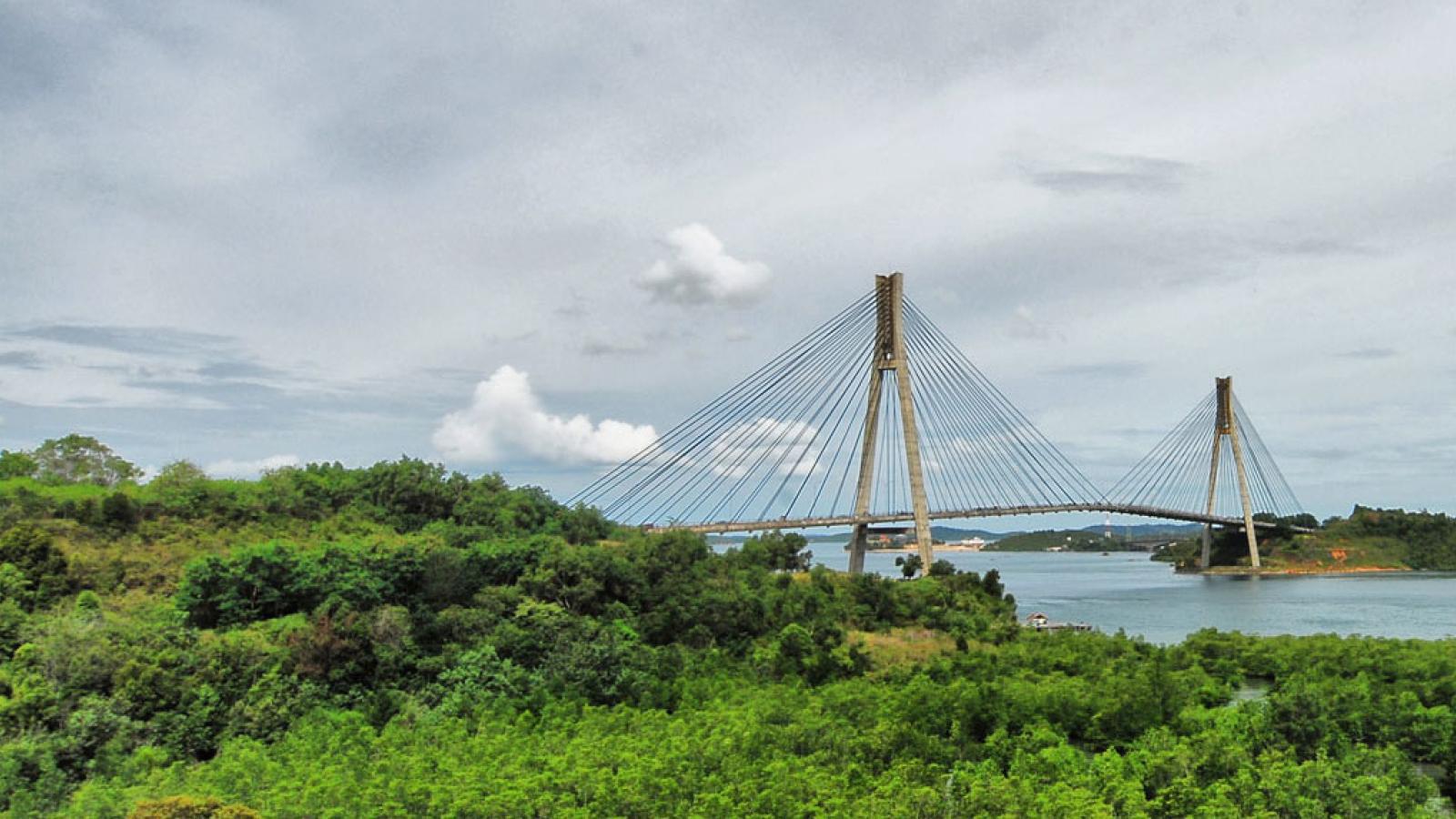Defending community rights in the march towards green energy
The international quest for green energy is reliant on “sacrificial zones” in developing countries – as shown by the experience of Indonesia’s Rempang islanders. Far from creating a green new deal for all, the transition to clean energy is displacing communities and reinforcing entrenched inequalities.

In the global march for greener energy, the needs – and sometimes even the human rights – of local populations affected by “green” projects are often deemed of little importance. My ongoing research on energy and the Global South shows clearly that a view of local people as “residue” is often at the heart of eco-driven investment models. Colonial and postcolonial development, and continuing North-South structural inequalities, are built on the idea of the residual, racialised, inferior “other”. The transition to green energy is reinforcing these long-held hierarchies.
On the Indonesian island of Rempang, for example, the national government and a Chinese-backed business consortium want to move the entire community to another island and turn their home into a huge solar panel manufacturing centre, solar farm and “ecocity”. The project will cover 17,000 hectares, displacing 7,500 inhabitants from 16 villages. Situated an hour’s ferry-ride from Singapore, in western Indonesia’s Riau archipelago, Rempang has long been home to small fishing and farming communities. But the island now lies within the special manufacturing, trade and logistics zone of Batam, and its people face eviction, under plans to transform their villages into the latest hub for the global green transition.
In earlier research, I describe a similar zone of special economic interest in India as “hydra-like”, because these sought-after zones change identity according to what is profitable. It appears that in 2004, Indonesian company PT MEG secured official permission to develop Rempang as a tourism zone covering 5,000 hectares, preserving existing villages. But today, greater profits lie in the green energy transition, meaning plans now include the massive solar panel factory – and exclude Rempang’s community.
Investment trumping local voices
In mid-2023, without prior information, Rempang’s residents found their roads lined with armed police and large military trucks in what seemed to be a state-backed land grab. Videos show soldiers and police clashing with farmers and fishing people. Numerous arrests followed, with police and government authorities investigating protestors’ home lives, work and financial affairs, in what local people describe as “harassment” and “pressure” to give up their land.
Gradually learning more about the project, residents petitioned different layers of government in defence of their homes, even visiting the capital, Jakarta, to try and meet officials. “People here have history. Their whole story is in this area. They love this land,” said one local fisherman. “You can make your project here… but build it in an empty area… Keep us here, give jobs to our children … [or] our identity will be lost.”
Finding the authorities unresponsive, the community began demonstrations, taken up by civil society organisations in Jakarta. But despite growing opposition and coverage by local and international media, officials dismissed popular discontent, continuing preparations for the Rempang ecocity as an industrial, service and tourism area. A joint venture between the authorities and PT MEG, the project aims to attract investment of about 381 trillion Indonesian Rupiah (almost US$25 billion) by 2080, creating jobs for 30,000 workers. The leading international investor is China’s Xinyi Glass, the world’s largest manufacturer of glass and solar panels, which has reportedly pledged US$11.6 billion over several decades – in return, it seems, for Rempang’s land.
A project given strategic importance
A key factor in the loss of the community’s land is Indonesia’s regulatory flexibility. This enabled the government to declare the proposed Rempang ecocity a Project of National Strategic Importance, allowing it to bypass social and environmental impact assessments, and acquire land quickly. There is local speculation that the government’s plans to build a new capital city on Borneo could be a motive for closer relations with China, and that the looming trade war between the United States, the EU and China over renewable technologies amplifies Beijing’s interests in Rempang.
The island also offers a crucial resource in the green energy transition: silica and quartz sand, the base material for manufacturing glass and solar panels. Mass mining of sand is a global environmental crisis often overlooked, with Indonesia at its centre. In 2003, facing irreversible ecological harm, the country banned sand mining, yet the illegal trade continued. In 2023, sand is back on the government’s agenda as a legally tradeable commodity, with Rempang likely to face the repercussions.
The ecocity project is a priority for Indonesia’s government, with ministers visiting the island to win local people’s support. Among residents who have signed relocation papers, some say they were under intense pressure to do so, although the authorities push a different narrative, trying to win a PR war by claiming no one has been coerced. Many residents have rejected the low compensation on offer, compelling officials to negotiate with protestors over the amount and change the relocation site. The initial proposal of an island previously used to isolate refugees and Covid patients from the rest of society understandably provoked residents’ fury at being seen as “residue” by their own government.
The green transition’s collateral damage?
Others are holding out, maintaining that “the community is not for sale” and erecting posters bearing the slogan across Rempang, in a gathering movement against the glass factory and ecocity. New rumours that local resistance will lead to the project’s cancellation have been denied at the highest levels, although protests forced the government to postpone its original eviction date of September 2023, even as officials remain determined to start solar panel production at Rempang in 2024. Finally receiving assistance from civil society groups and legal aid organisations, residents are openly asking fundamental questions about relocation, such as where their children will study, and whether the project will displace ancestral graves.
Ongoing events in Rempang are just the tip of the iceberg, as the poorer areas of the South become suppliers helping meet global energy needs. While the world seeks to increase green energy consumption, we need to consider the likely winners and losers in this process. Despite much international talk of climate and energy justice, the idea of a “just” green energy transition fails to reach places like Rempang. Fighting for justice on the ground might be the only way local people can ensure they are heard in the global green energy transition.
Read Nikita’s full account of the Rempang story at The Conversation: Victims of the green energy boom? The Indonesians facing eviction over a China-backed plan to turn their island into a solar panel ‘ecocity’

